Reptiles across the globe are struggling to survive in their natural habitats. Due to habitat loss, poaching, and climate change, many species face the brink of extinction. These endangered reptiles are symbols of resilience, but they need urgent protection to continue thriving.
Hawksbill Sea Turtle
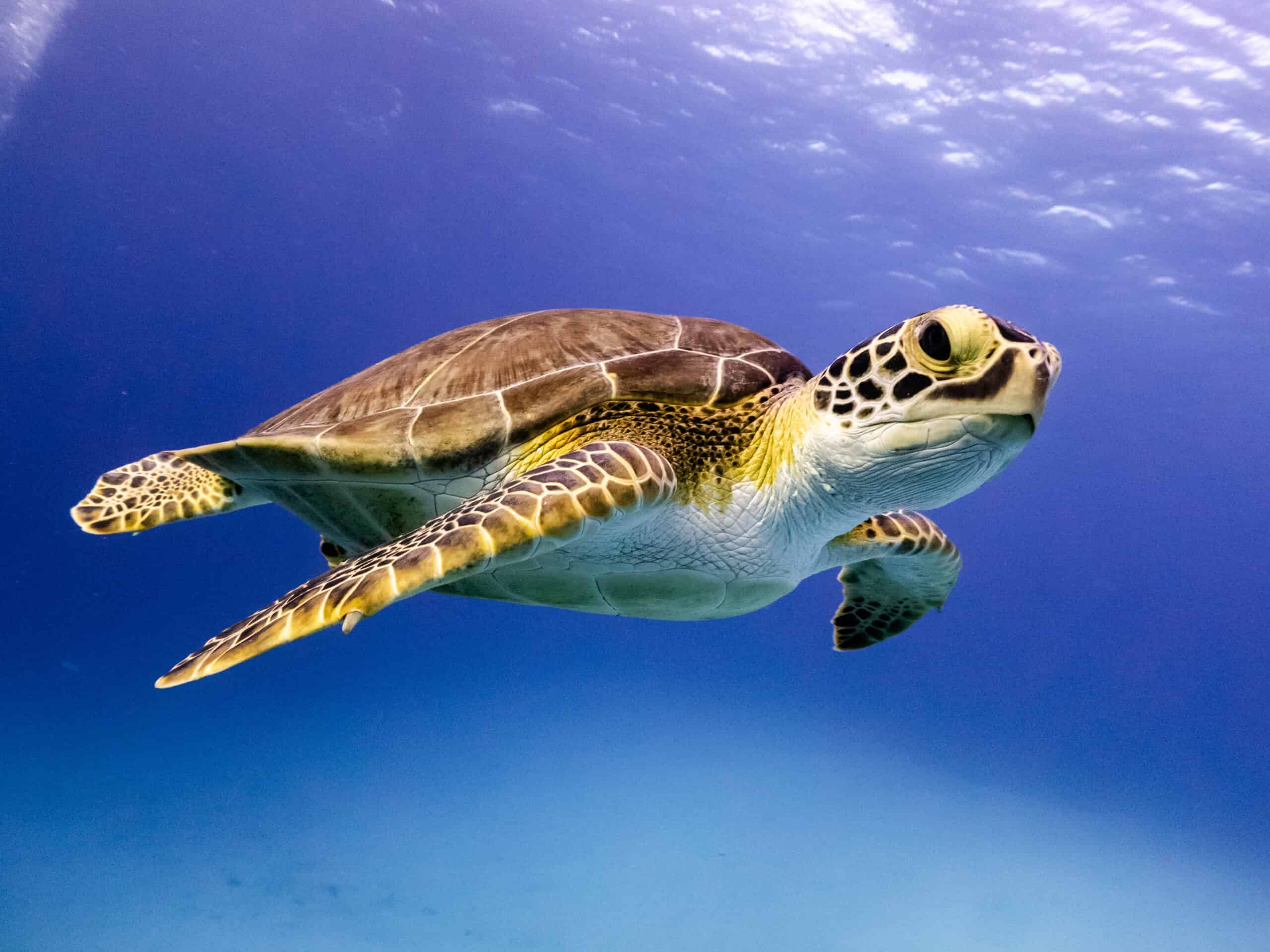
The Hawksbill Sea Turtle is known for its beautiful, patterned shell. This species plays a vital role in maintaining healthy coral reefs by controlling sponge populations. Hawksbills face severe threats from poaching for their shells, used in jewelry. Their habitat is also disappearing due to coastal development. As a result, they are critically endangered and need immediate conservation efforts.
Jamaican Iguana
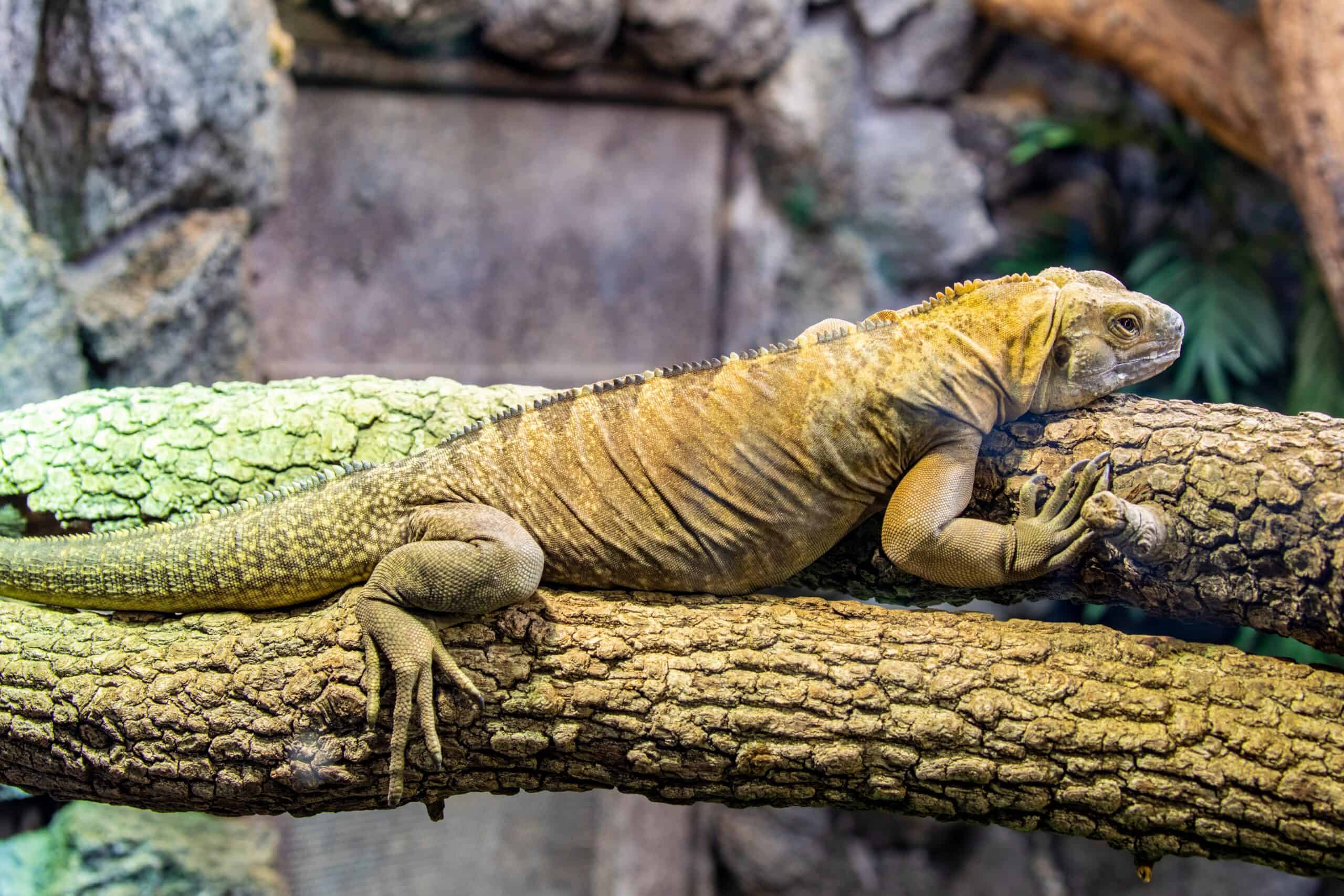
The Jamaican Iguana is one of the rarest lizards in the world. Found only in the dry forests of Jamaica, this species was thought to be extinct until rediscovered in 1990. Habitat destruction and invasive species threaten their survival. Conservation programs are now working to protect their remaining population. Without intervention, they could disappear forever.
Radiated Tortoise
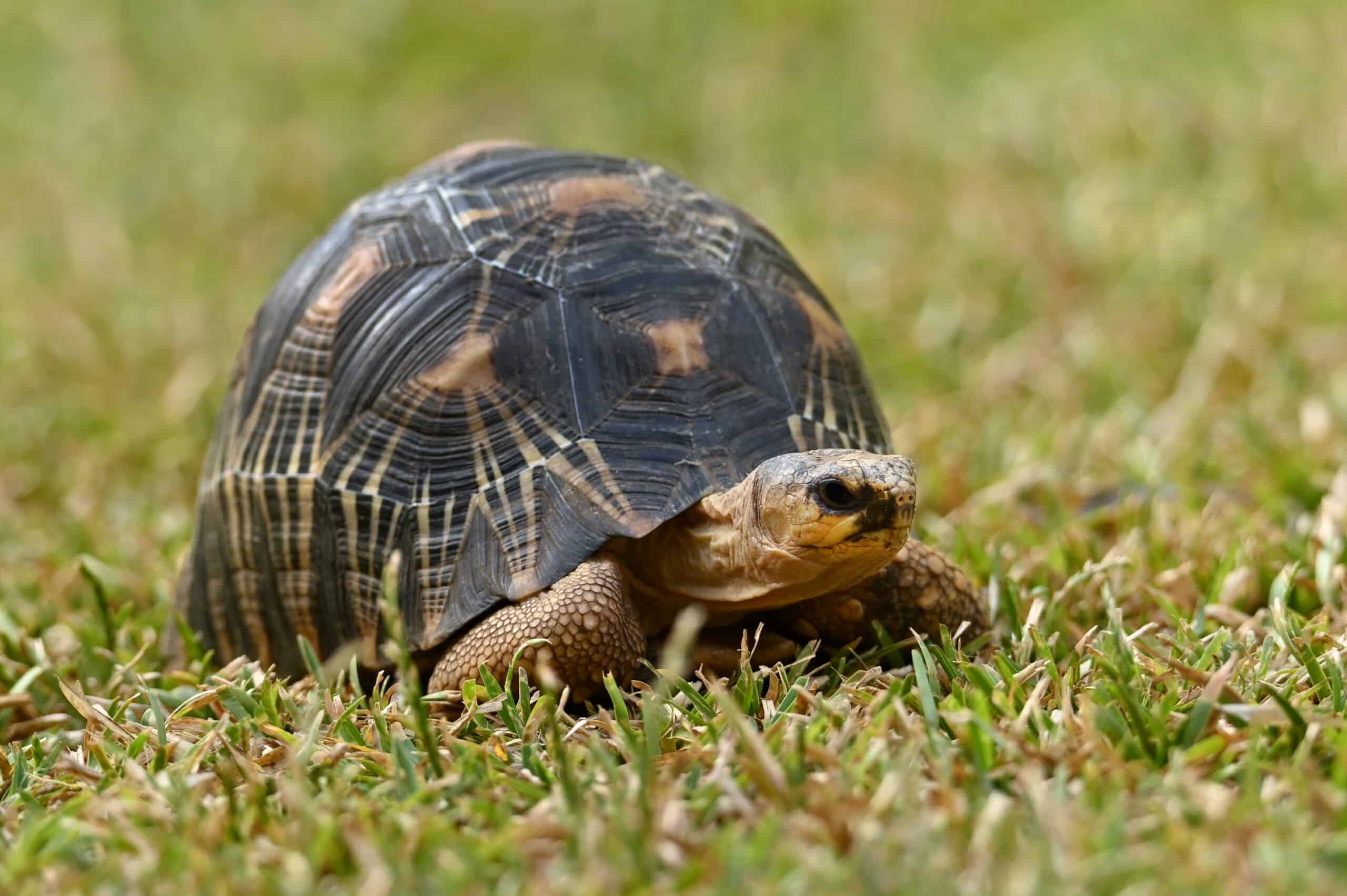
The Radiated Tortoise is native to Madagascar and recognized for its striking star-patterned shell. Poaching and illegal pet trade have decimated their numbers. Deforestation has also reduced their natural habitat significantly. They are critically endangered, and breeding programs are crucial for their survival. Protection of their remaining wild populations is a high priority.
Chinese Alligator
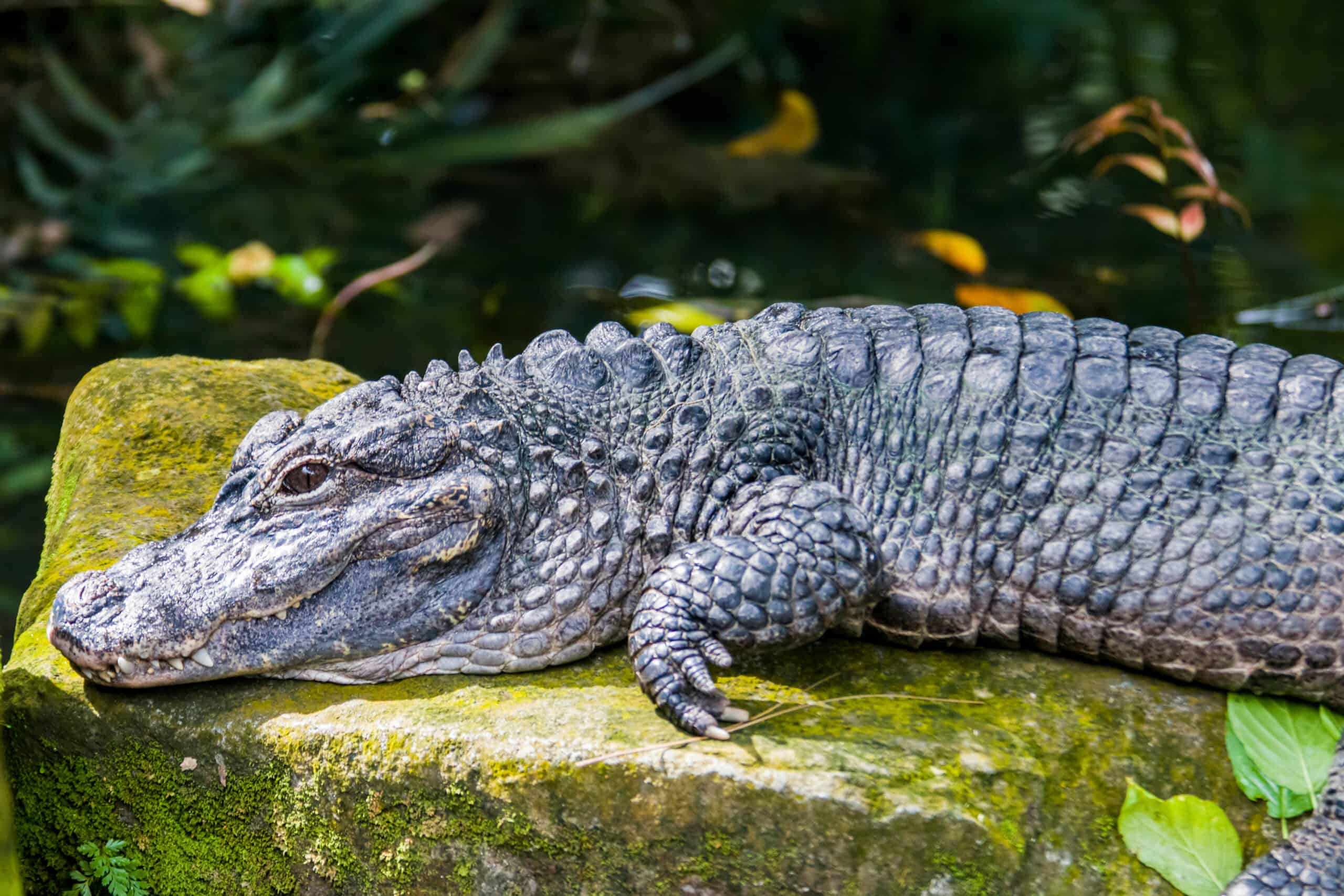
The Chinese Alligator is much smaller than its American counterpart. It is found in the freshwater lakes and marshes of eastern China. Agricultural expansion and pollution have destroyed much of their habitat. With fewer than 120 individuals left in the wild, they are critically endangered. Conservation programs aim to restore their habitat and increase their population.
Leatherback Sea Turtle
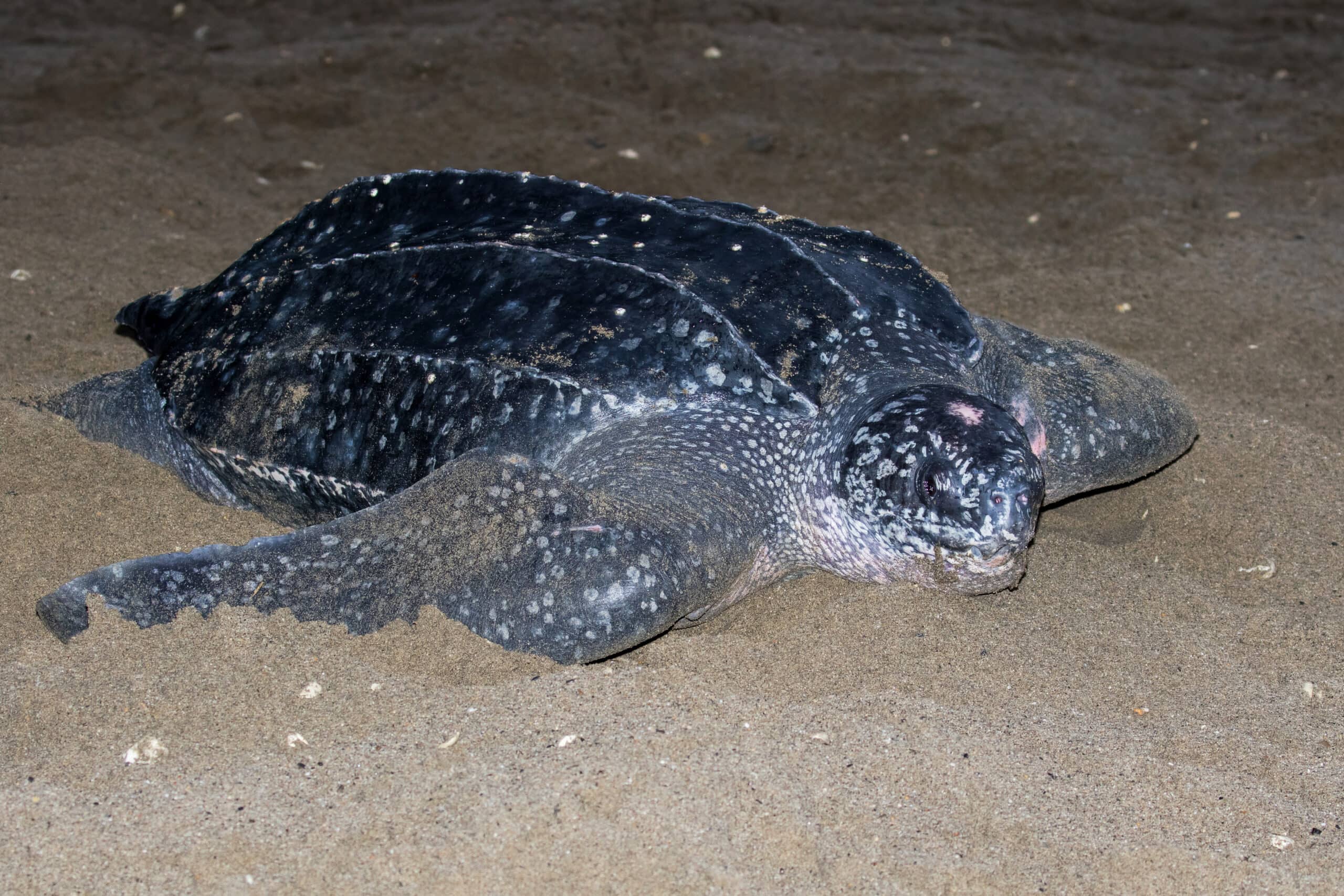
The Leatherback Sea Turtle is the largest turtle species in the world. Its leathery shell sets it apart from other turtles. Leatherbacks are crucial for maintaining marine ecosystems by keeping jellyfish populations in check. However, fishing nets, pollution, and climate change severely threaten their existence. Immediate global efforts are needed to prevent their extinction.
Gharial
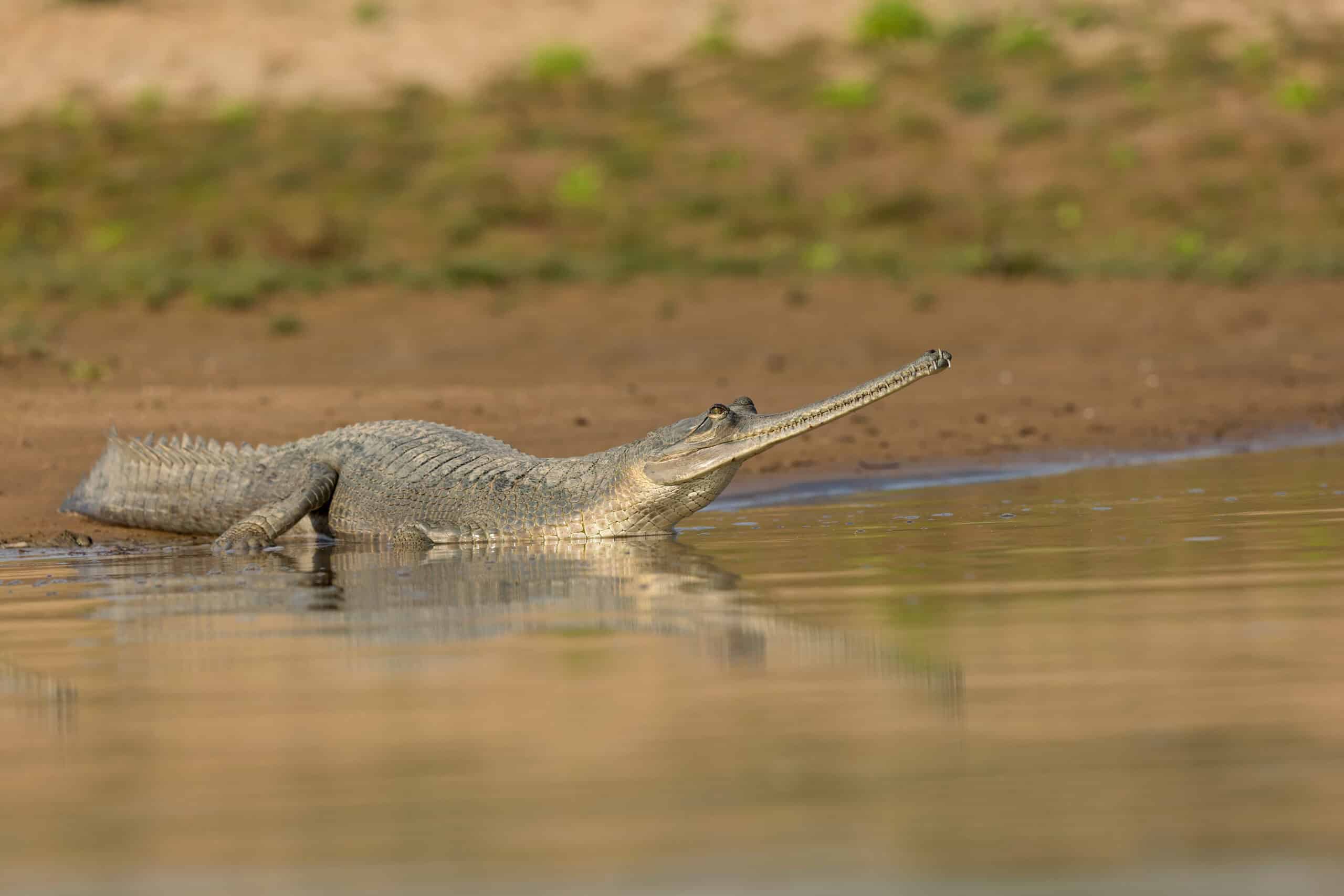
The Gharial is a long-snouted crocodile found in the rivers of India and Nepal. It feeds primarily on fish, making it an essential part of the aquatic ecosystem. Habitat destruction, sand mining, and dams have greatly reduced their river habitats. With fewer than 200 individuals remaining, they are critically endangered. Conservation efforts focus on habitat restoration and protection from human interference.
Komodo Dragon
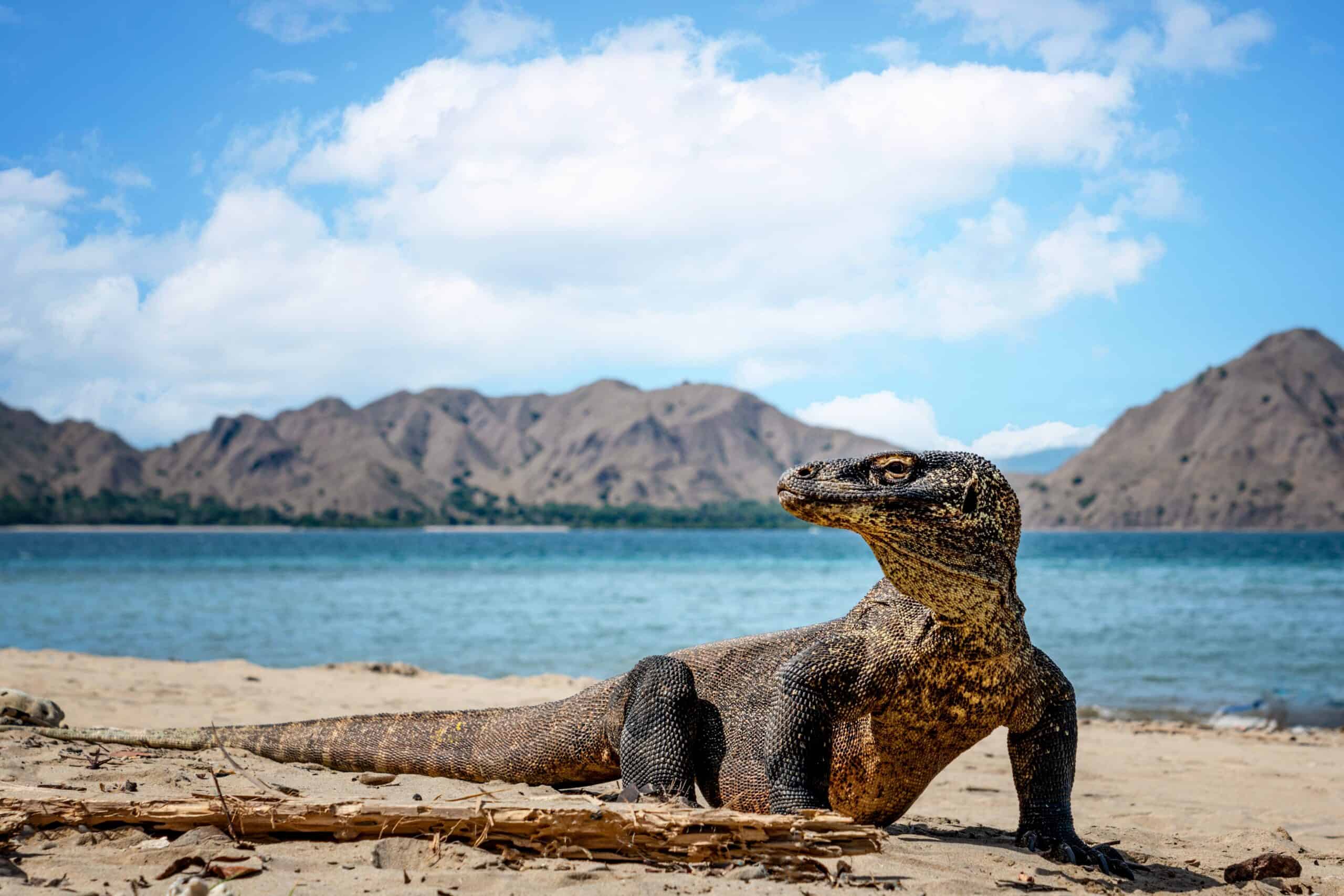
The Komodo Dragon is the largest lizard on Earth, native to Indonesia. It is an apex predator, hunting deer and wild pigs. Habitat destruction and poaching threaten their survival. In addition, natural disasters like tsunamis could devastate their populations. Conservation areas and strict protection laws are essential for their future.
Philippine Crocodile
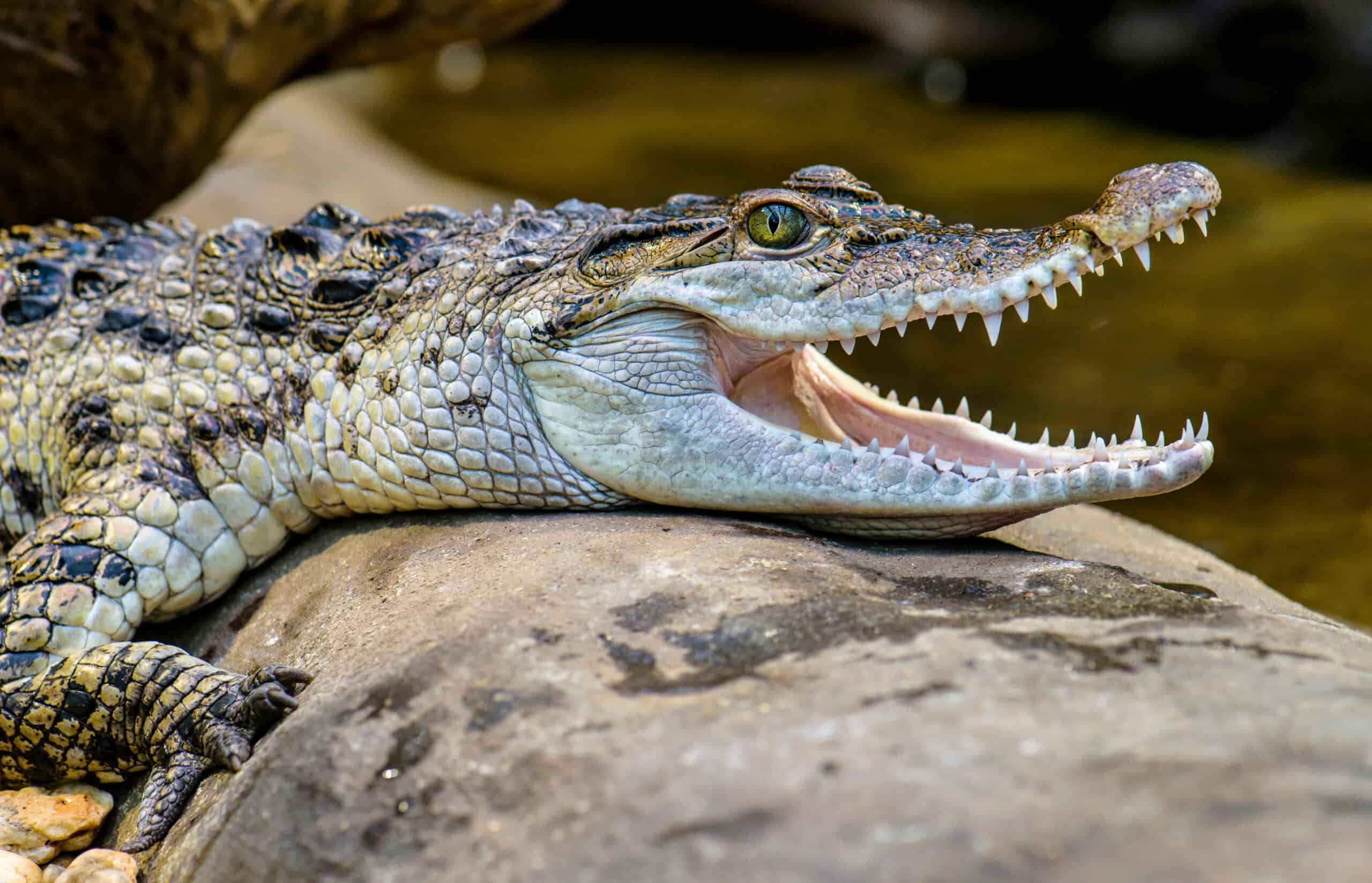
The Philippine Crocodile is one of the rarest crocodiles in the world. Found in the freshwater regions of the Philippines, it faces threats from habitat destruction and hunting. Illegal fishing practices have also taken a toll on their numbers. With fewer than 100 individuals left in the wild, they are critically endangered. Conservationists are working to breed and reintroduce them into protected areas.
Mary River Turtle
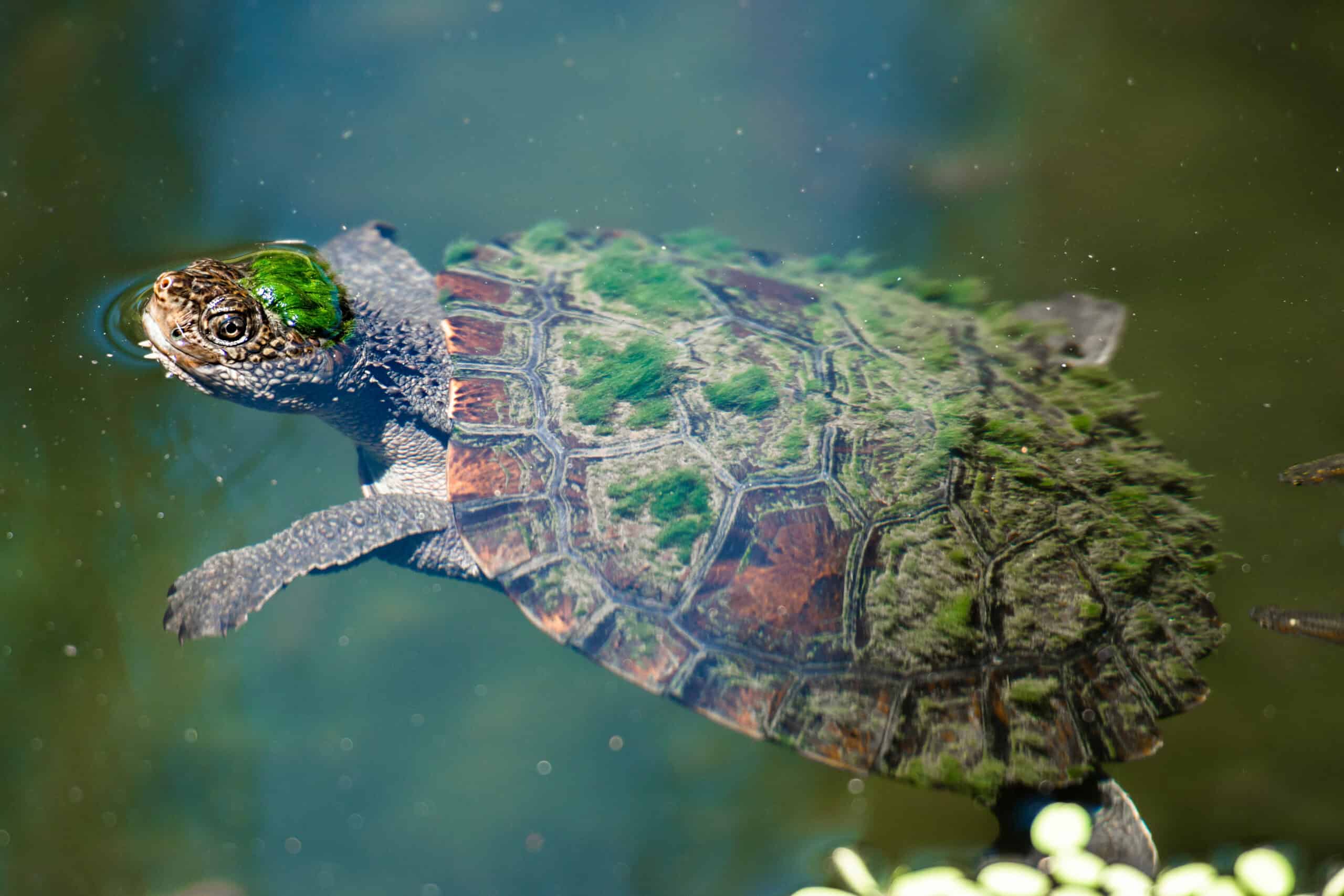
The Mary River Turtle is an ancient species found only in Queensland, Australia. This freshwater turtle is known for its distinctive green algae that sometimes grows on its shell. Habitat destruction and the illegal pet trade have severely impacted their population. They are critically endangered, with only a few individuals left in the wild. Conservation programs focus on protecting their habitat and raising awareness about their plight.
Siamese Crocodile
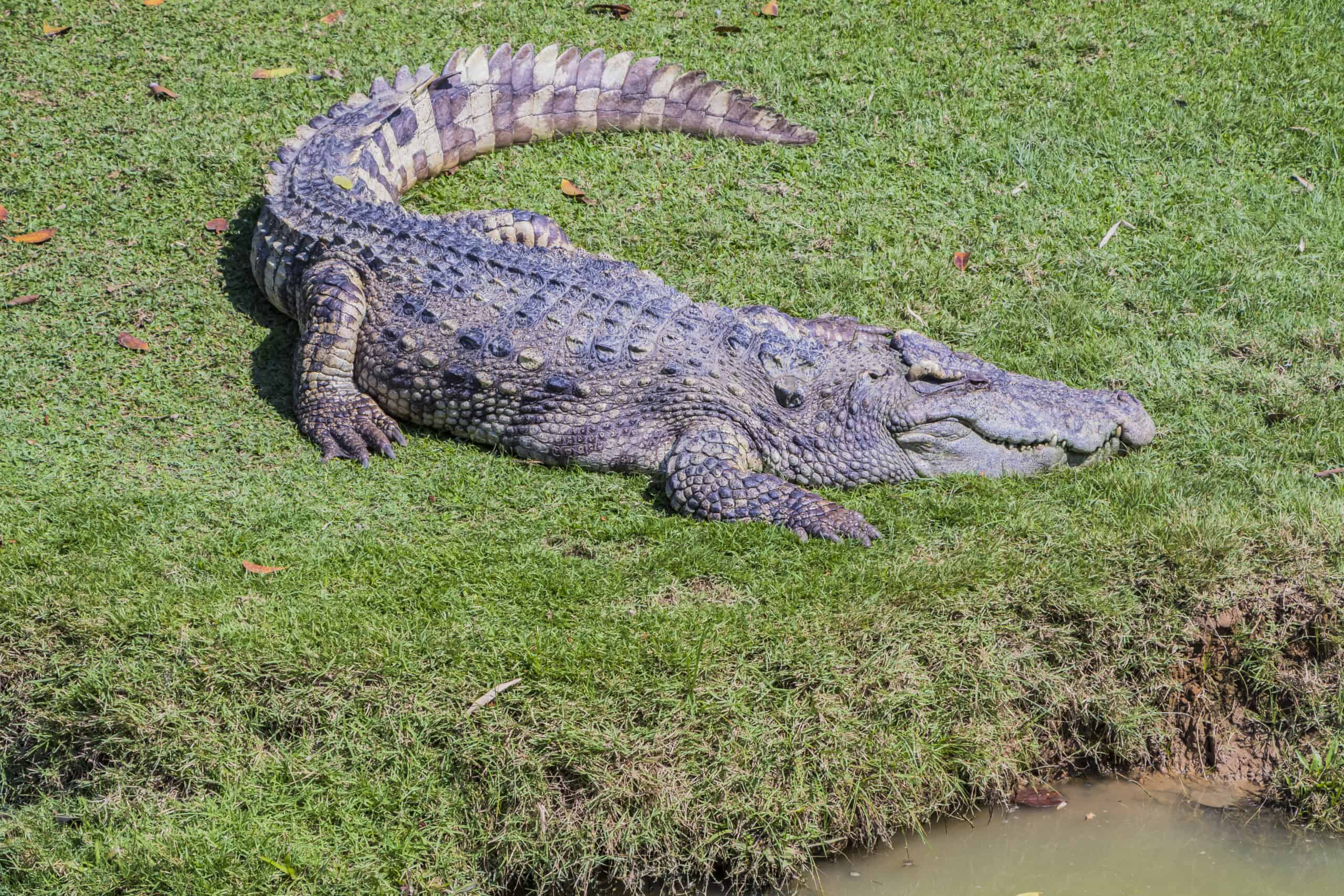
The Siamese Crocodile is one of the rarest crocodiles in the world. Native to Southeast Asia, it thrives in freshwater wetlands and rivers. Habitat loss due to agriculture and illegal hunting have pushed this species to the brink of extinction. Captive breeding programs are crucial for their survival, as wild populations are dangerously low. Efforts are being made to reintroduce them into protected wetlands.
Loggerhead Sea Turtle
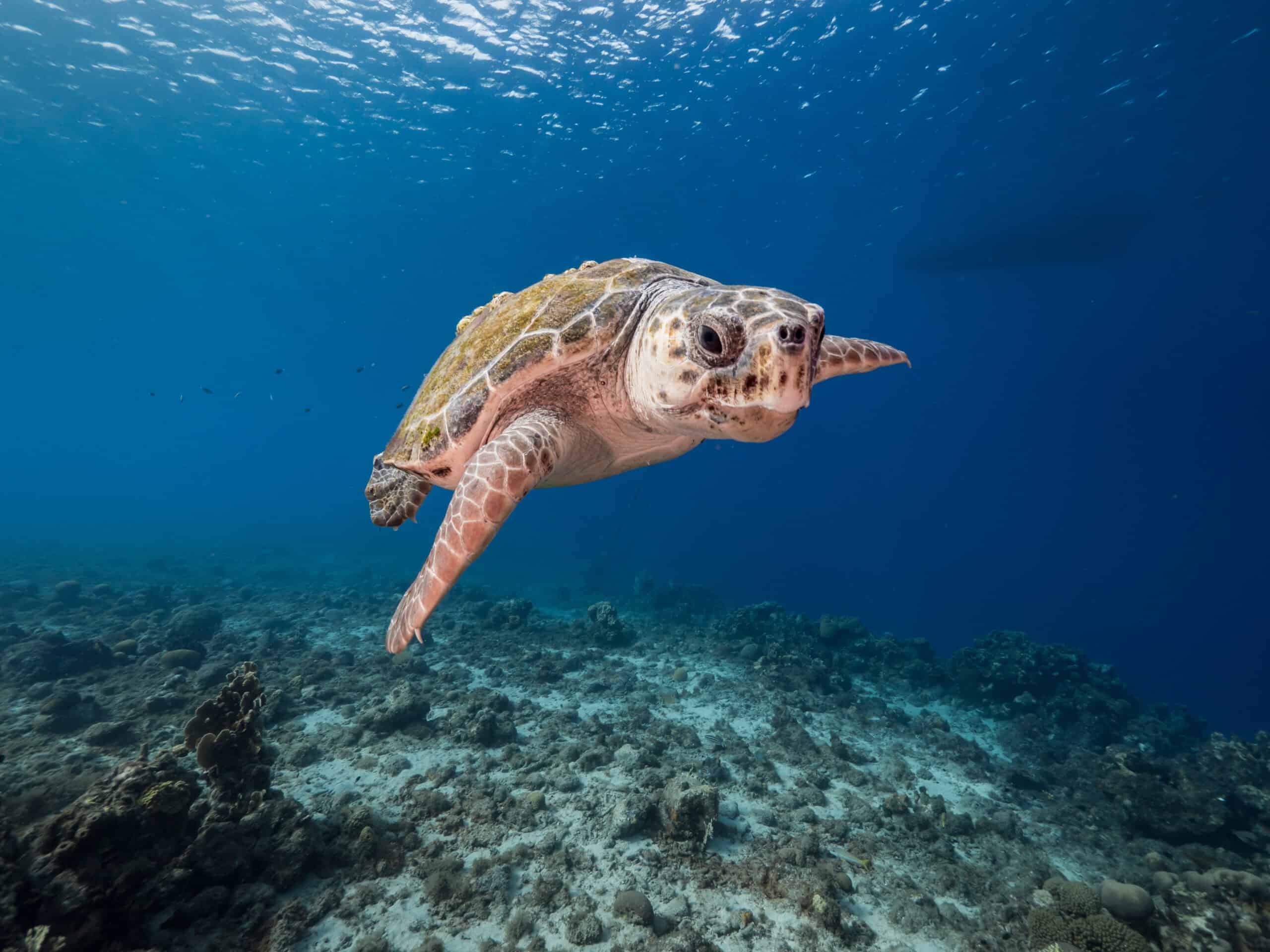
The Loggerhead Sea Turtle is known for its large head and powerful jaws. It plays a vital role in marine ecosystems by controlling jellyfish populations. However, pollution, fishing nets, and climate change pose severe threats to its existence. They are listed as vulnerable, with populations declining across the globe. Conservation efforts focus on protecting nesting sites and reducing bycatch in fishing gear.
Madagascar Big-headed Turtle
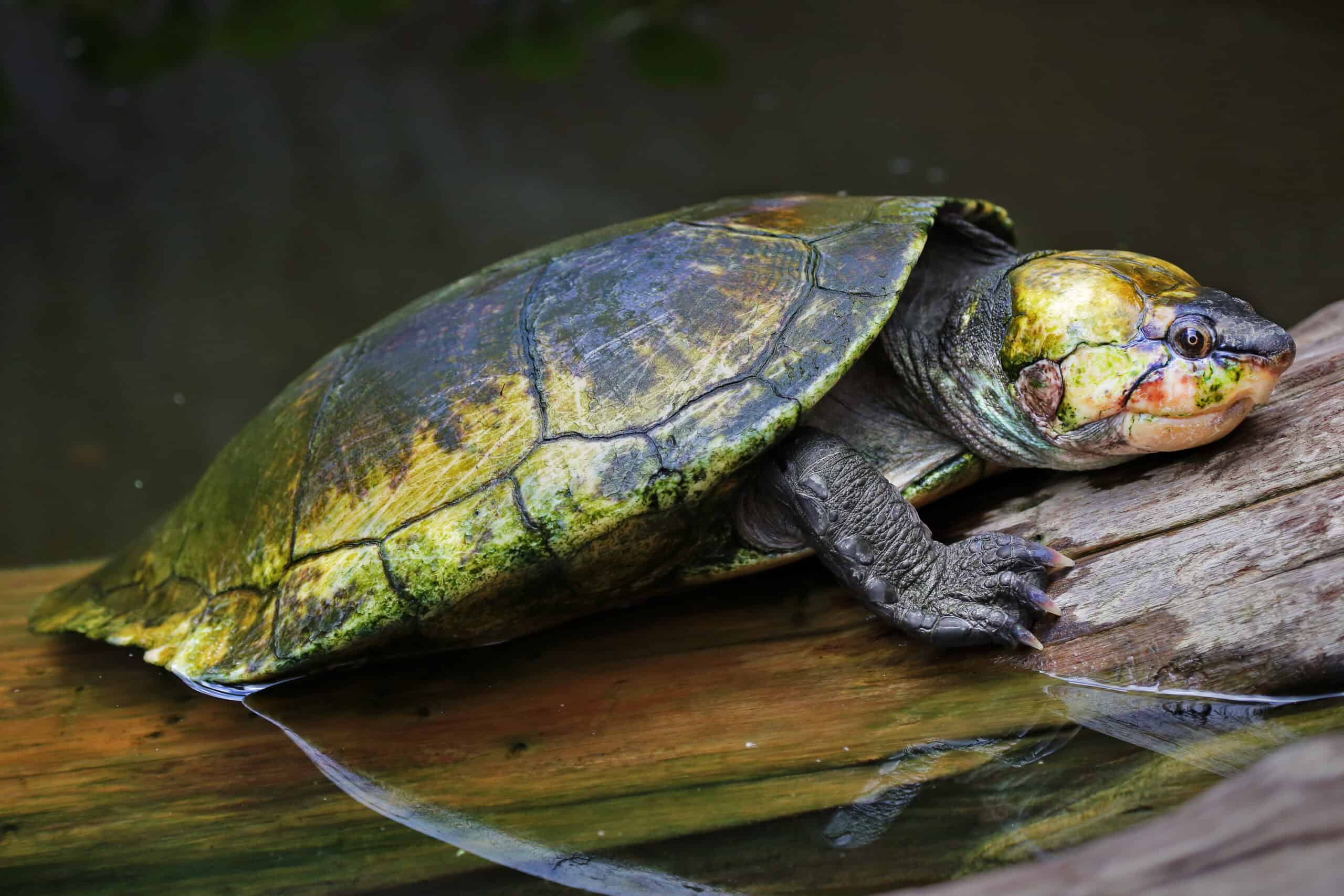
The Madagascar Big-headed Turtle is native to the rivers and lakes of Madagascar. Its large head and unique shell shape make it easily recognizable. Habitat destruction and hunting have led to a sharp decline in their population. As a critically endangered species, only a few individuals remain in the wild. Conservationists are working to protect their habitats and prevent further illegal trade.
Cuban Crocodile
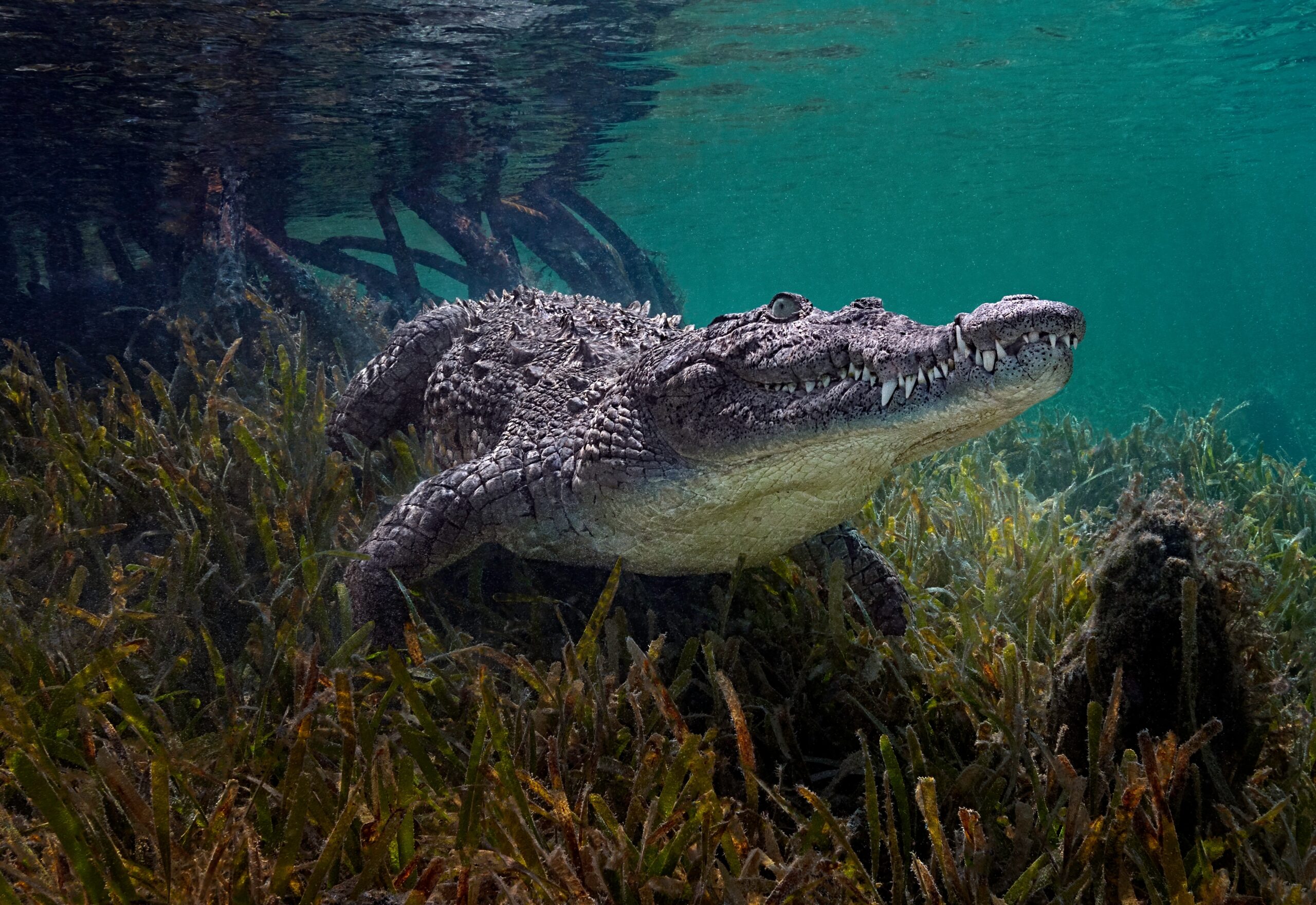
The Cuban Crocodile is found only in Cuba’s Zapata Swamp and Isle of Youth. It has a distinctive appearance with bright colors and rough scales. Hunting, habitat loss, and hybridization with other crocodile species threaten its survival. The Cuban Crocodile is critically endangered, with fewer than 4,000 individuals left. Conservation efforts focus on habitat restoration and protection from human interference.
Golden Coin Turtle
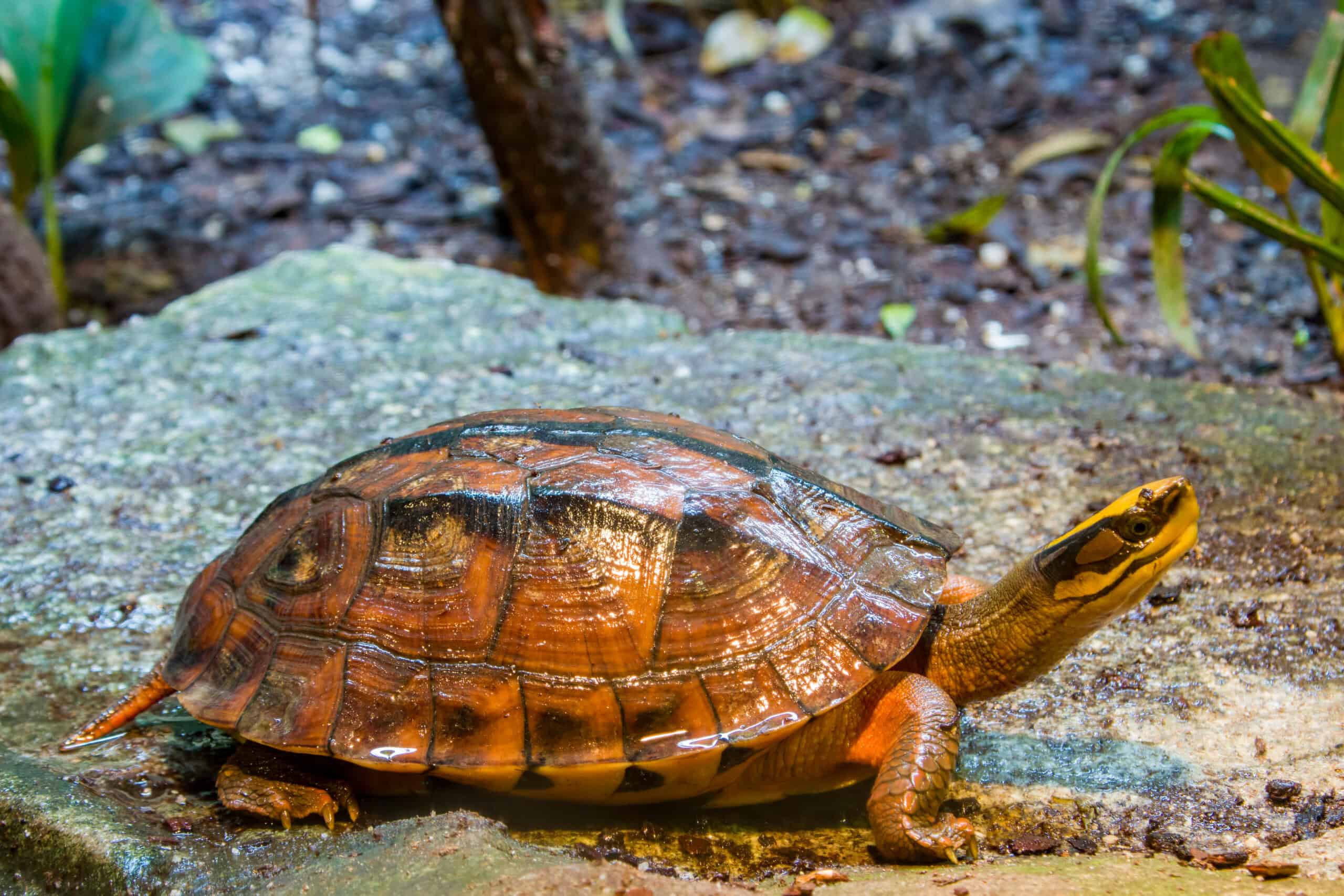
The Golden Coin Turtle, native to China and Vietnam, is prized for its bright, golden-yellow shell. It is often illegally traded for use in traditional medicine and as a status symbol. This illegal trade has driven the species to the brink of extinction. With fewer than 1,000 individuals left, they are critically endangered. Conservationists are working to curb illegal trade and protect their remaining populations.
Green Sea Turtle
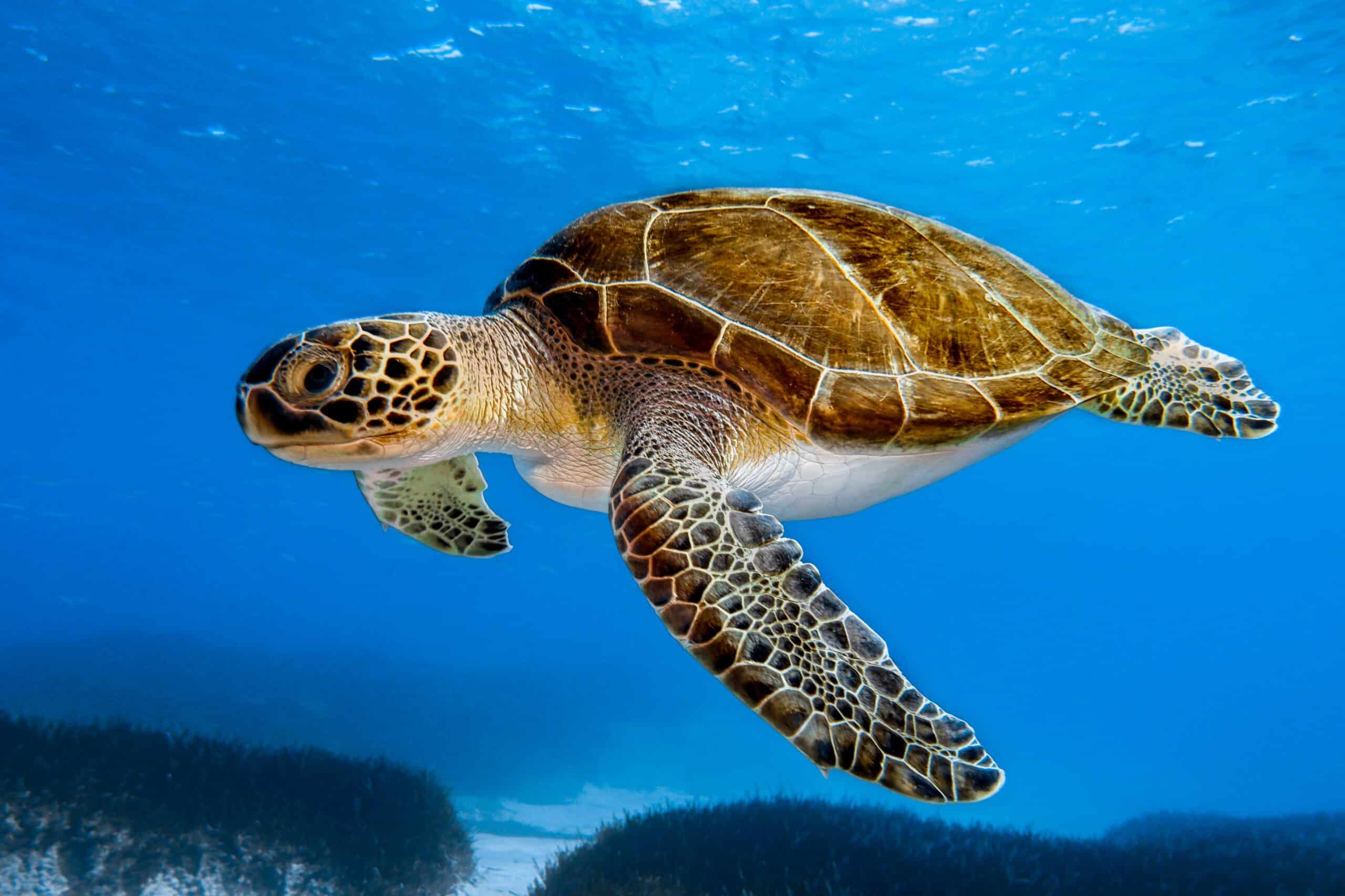
The Green Sea Turtle is one of the largest sea turtles and is found in oceans worldwide. It plays a crucial role in maintaining seagrass beds and coral reefs. Threats like poaching, pollution, and climate change have caused a significant decline in their numbers. They are classified as endangered, with nesting sites increasingly under threat. Conservation efforts focus on protecting nests and reducing marine pollution.
Aruba Island Rattlesnake
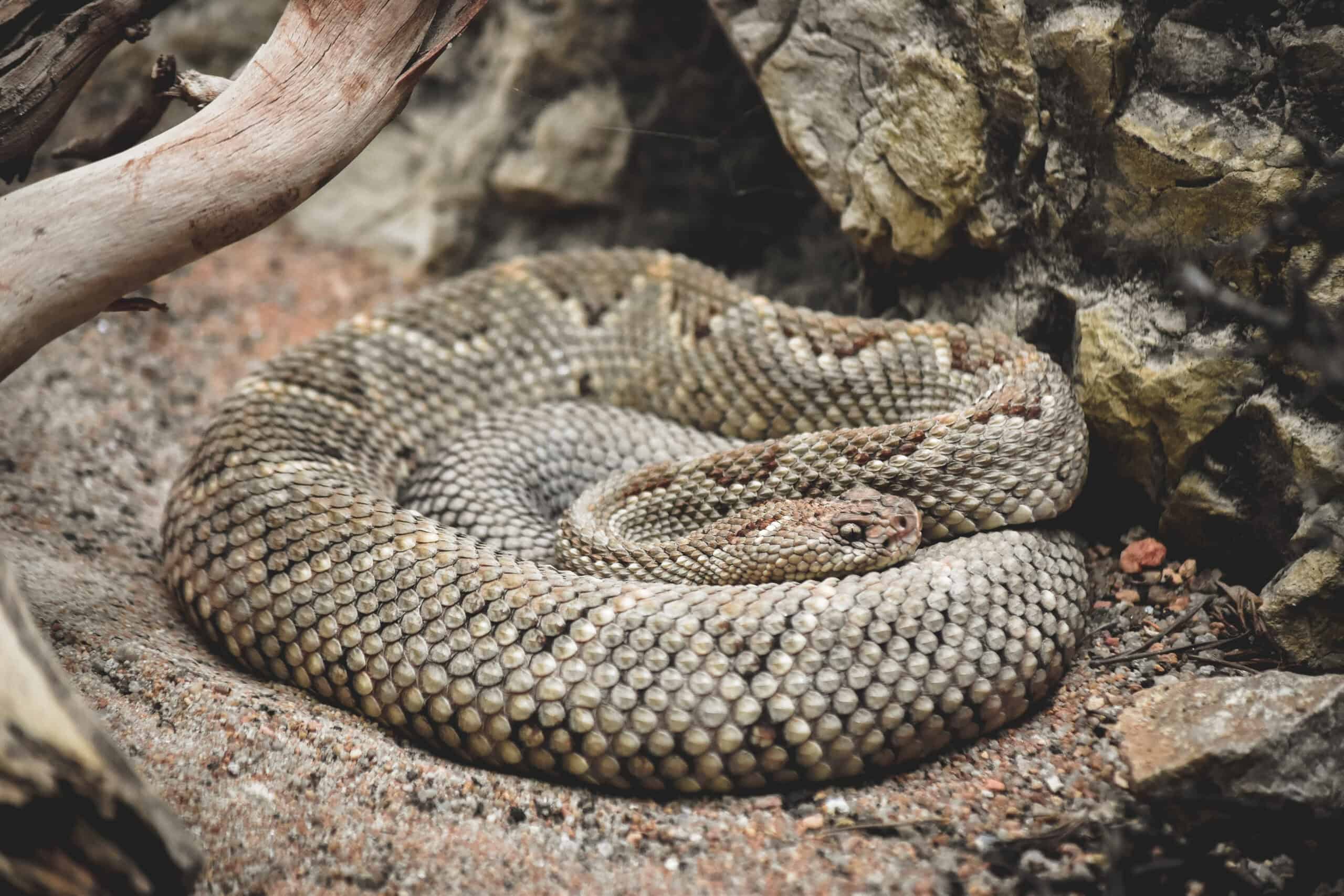
The Aruba Island Rattlesnake is native to the small island of Aruba in the Caribbean. This species is one of the rarest rattlesnakes in the world. Habitat loss and human encroachment have drastically reduced its population. Only about 230 individuals remain in the wild. Conservation efforts focus on protecting their habitat and raising awareness among locals to prevent further decline.
Kemp’s Ridley Sea Turtle
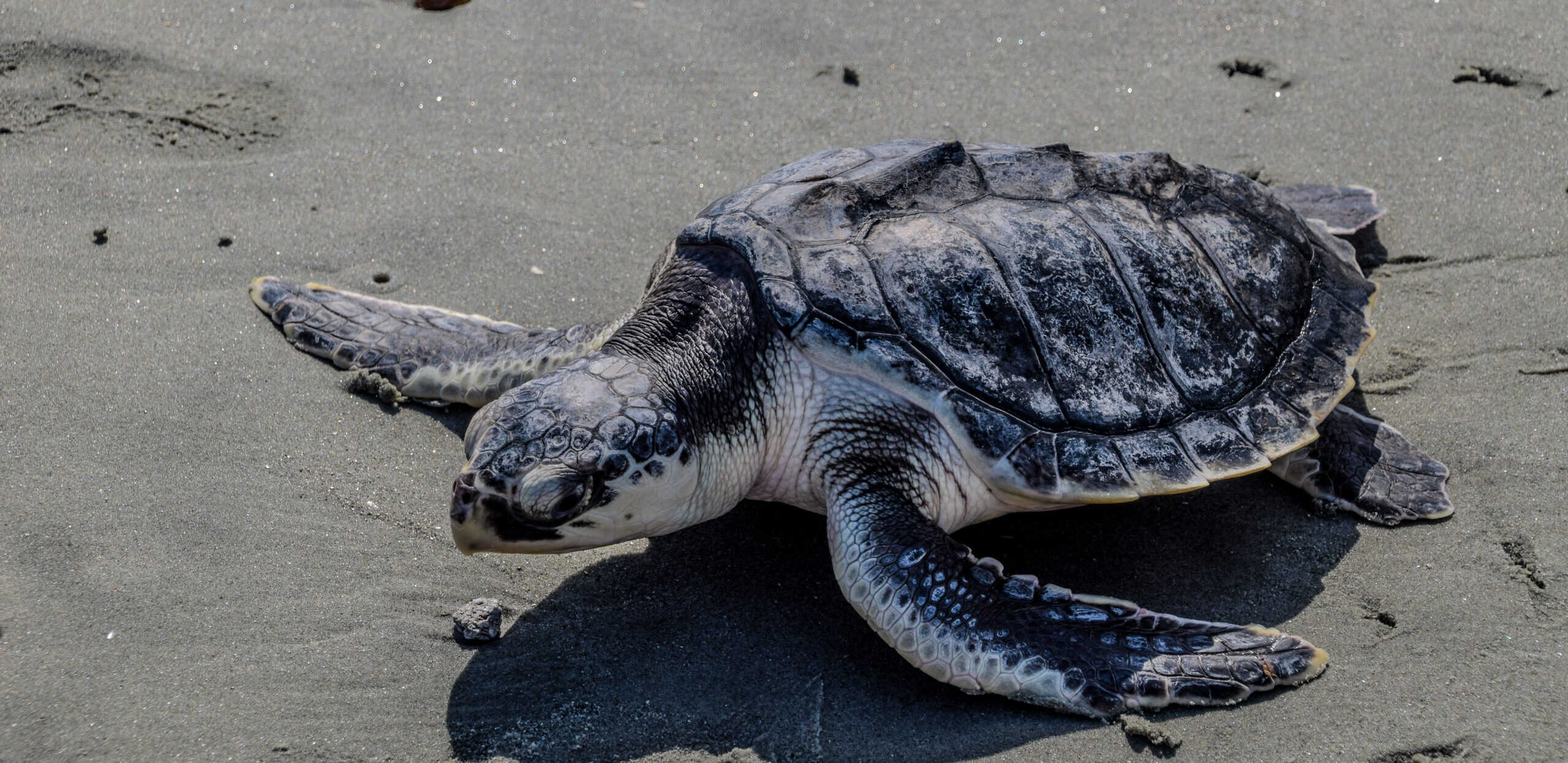
Kemp’s Ridley Sea Turtle is the smallest and most endangered sea turtle species. It is known for its unique mass nesting called “arribada.” Coastal development and accidental capture in fishing gear are significant threats. Conservation efforts focus on protecting nesting sites and reducing bycatch in fishing nets. Despite these efforts, its population remains critically low.
Fiji Crested Iguana
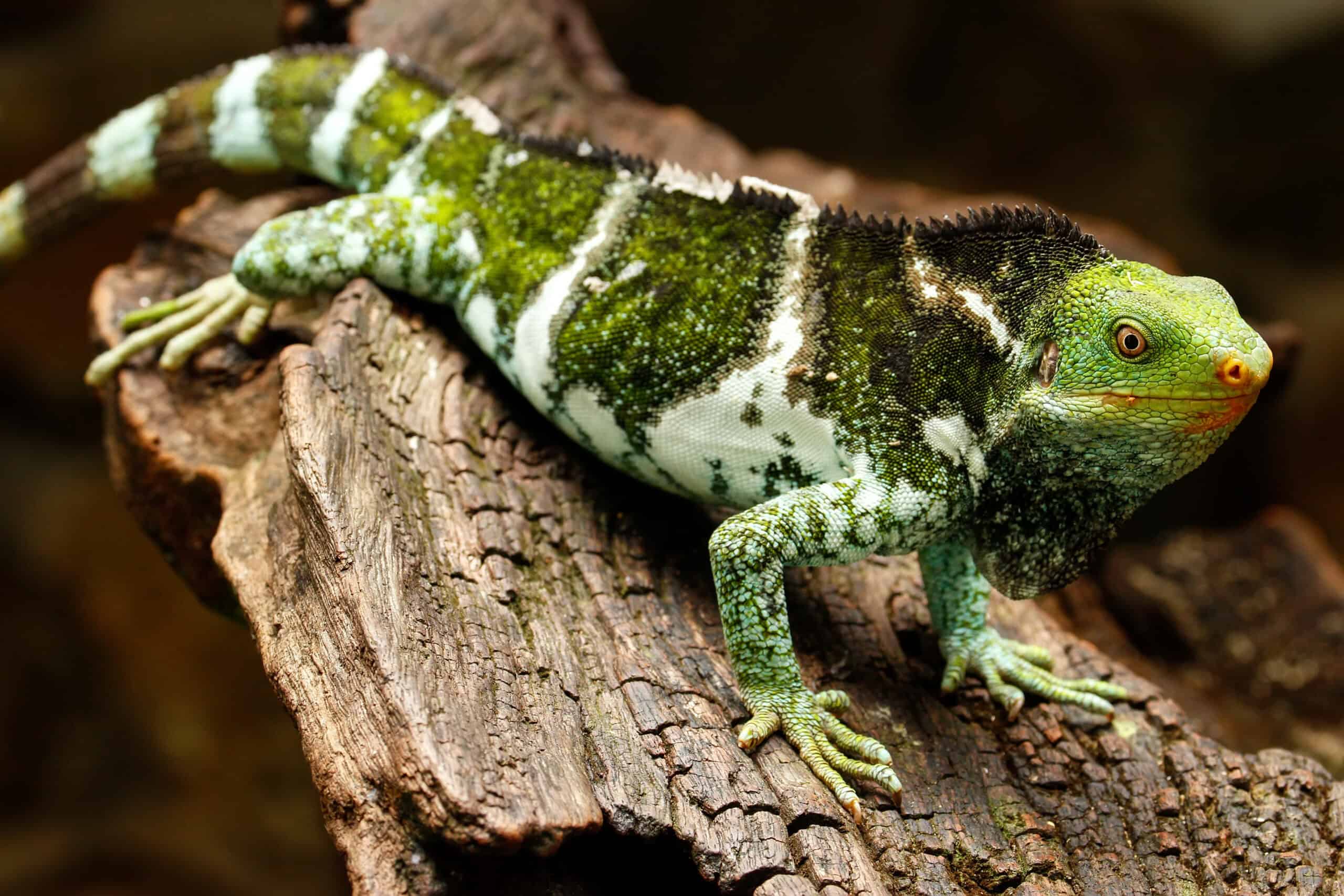
The Fiji Crested Iguana is native to only a few small islands in Fiji. This brightly colored iguana is known for its striking appearance. Habitat destruction due to agricultural expansion and invasive species are the main threats. Their population has plummeted in recent years, making them critically endangered. Conservation programs are now working to restore their natural habitat and breed them in captivity.
Orinoco Crocodile
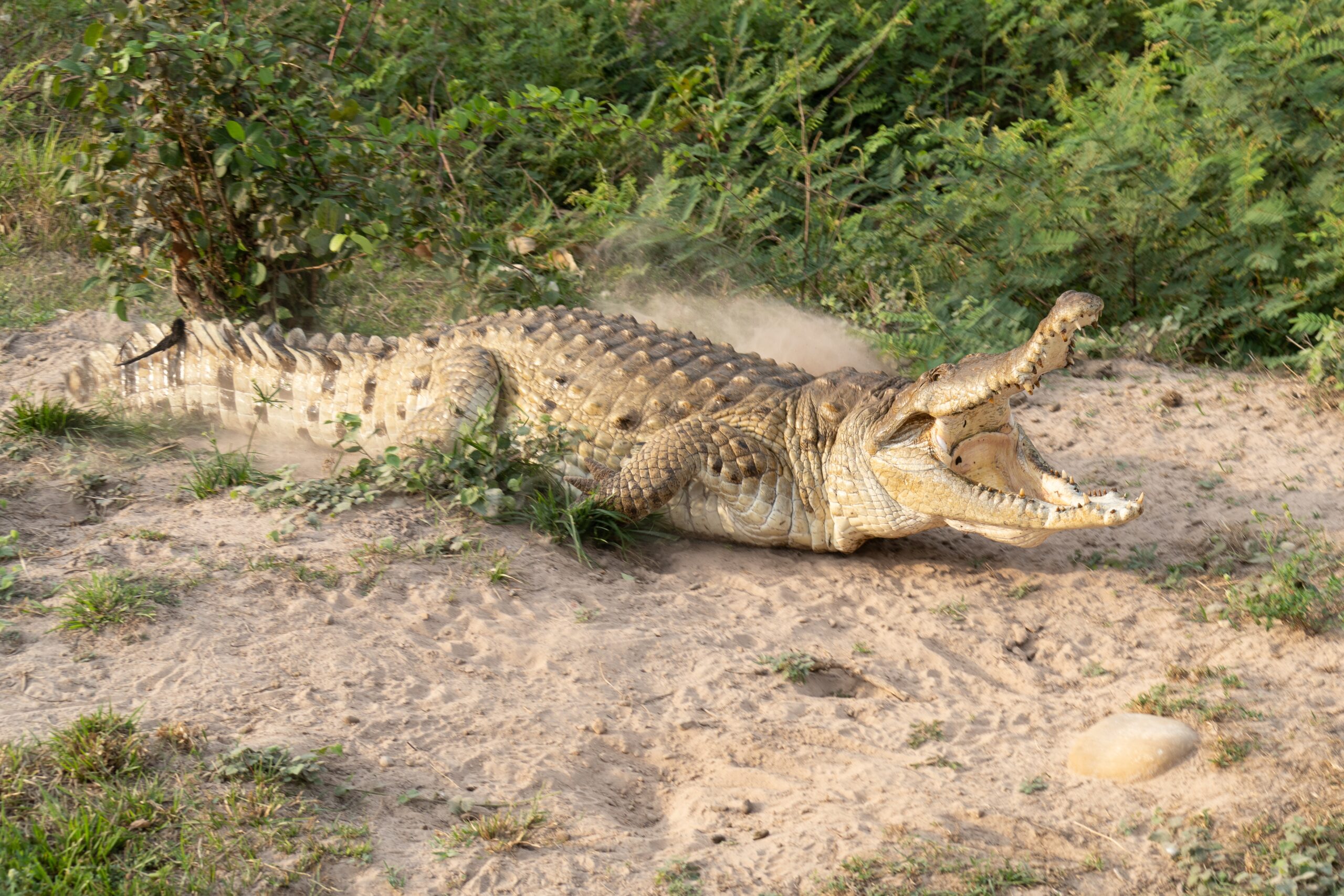
The Orinoco Crocodile is the largest predator in South America. Found in the Orinoco River Basin, it plays a crucial role in the ecosystem. Hunting for its skin and habitat destruction have nearly wiped out its population. Fewer than 250 individuals remain in the wild, making it critically endangered. Conservation programs are working to protect their habitat and regulate hunting.
Ploughshare Tortoise
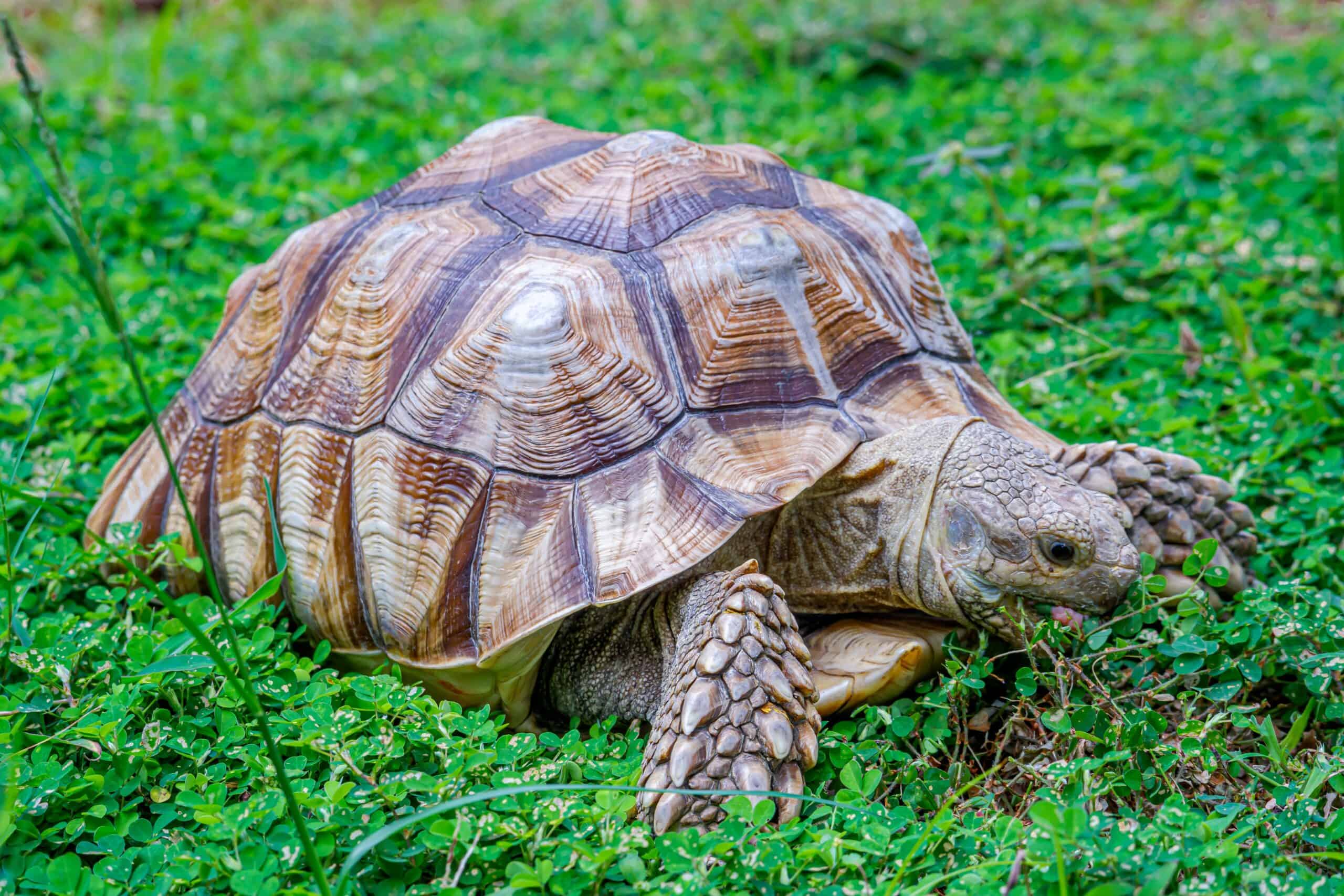
The Ploughshare Tortoise is native to Madagascar and easily recognizable by its high-domed shell. Illegal pet trade and habitat destruction are pushing this species toward extinction. With fewer than 400 individuals left, it is one of the most endangered tortoises. Conservation efforts focus on breeding programs and curbing illegal trade. Habitat restoration is also crucial for their survival.
Eastern Indigo Snake
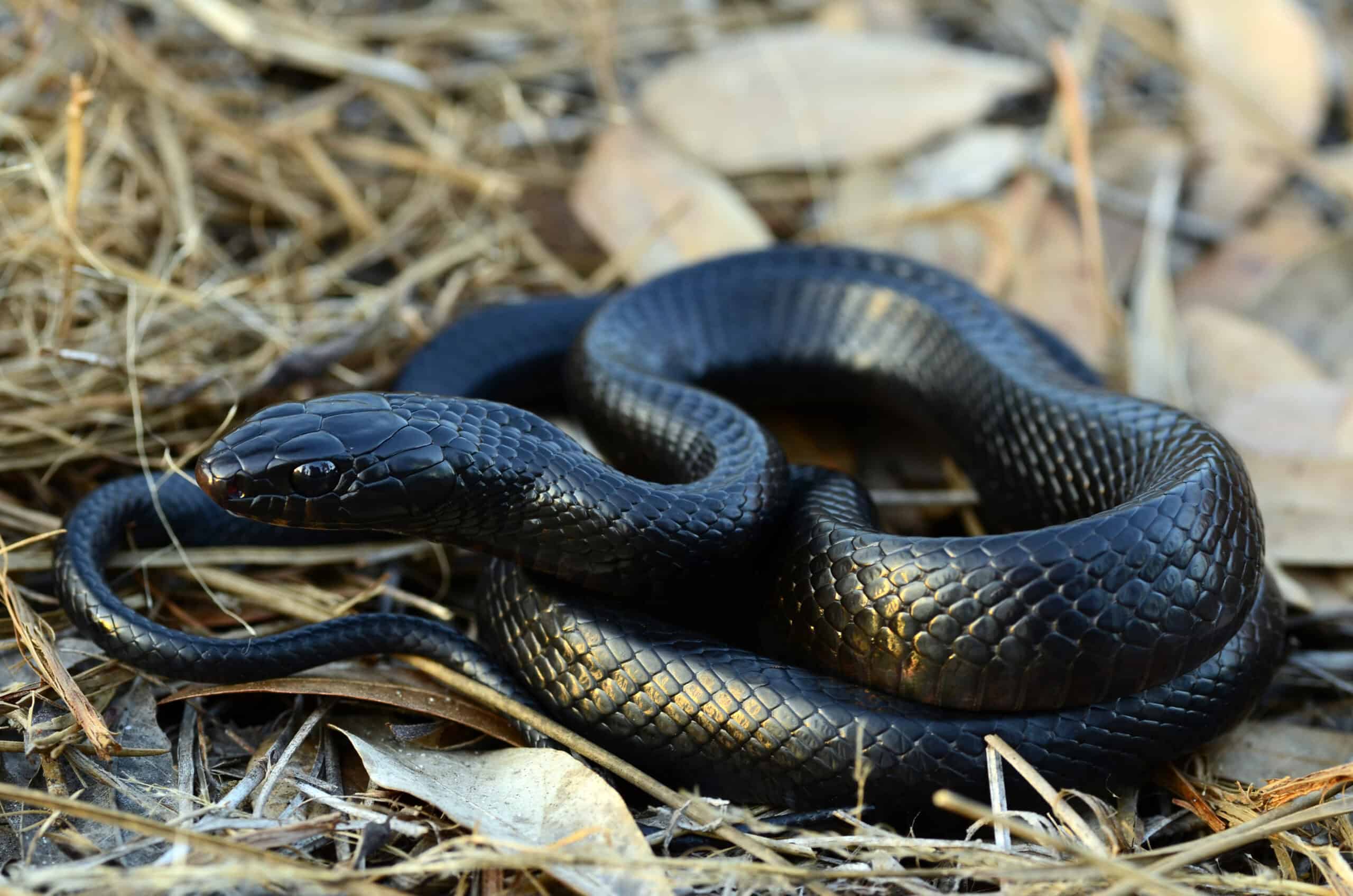
The Eastern Indigo Snake is the longest native snake in North America. It plays a vital role in controlling rodent populations. Habitat loss due to urbanization and agriculture has severely reduced its range. Conservationists are working to protect and restore its natural habitats. They are also focusing on breeding programs to increase their numbers in the wild.
Blue Iguana
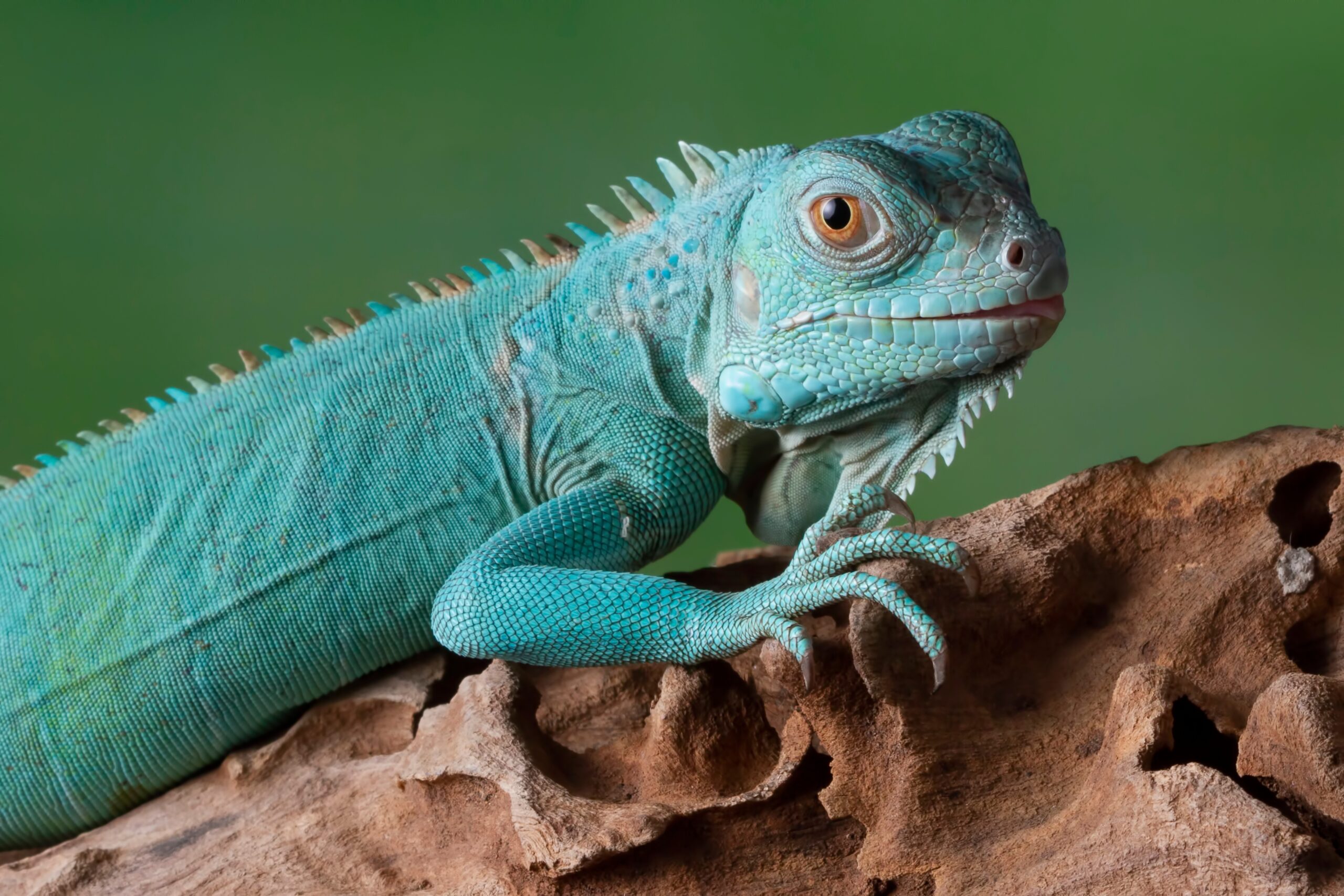
The Blue Iguana is found only in Grand Cayman and is known for its striking blue color. Habitat destruction and invasive species have pushed this species to the brink of extinction. With fewer than 500 individuals left, it is critically endangered. Conservation efforts include captive breeding and habitat restoration to increase their numbers. Strict laws are in place to protect them from further decline.
Egyptian Tortoise
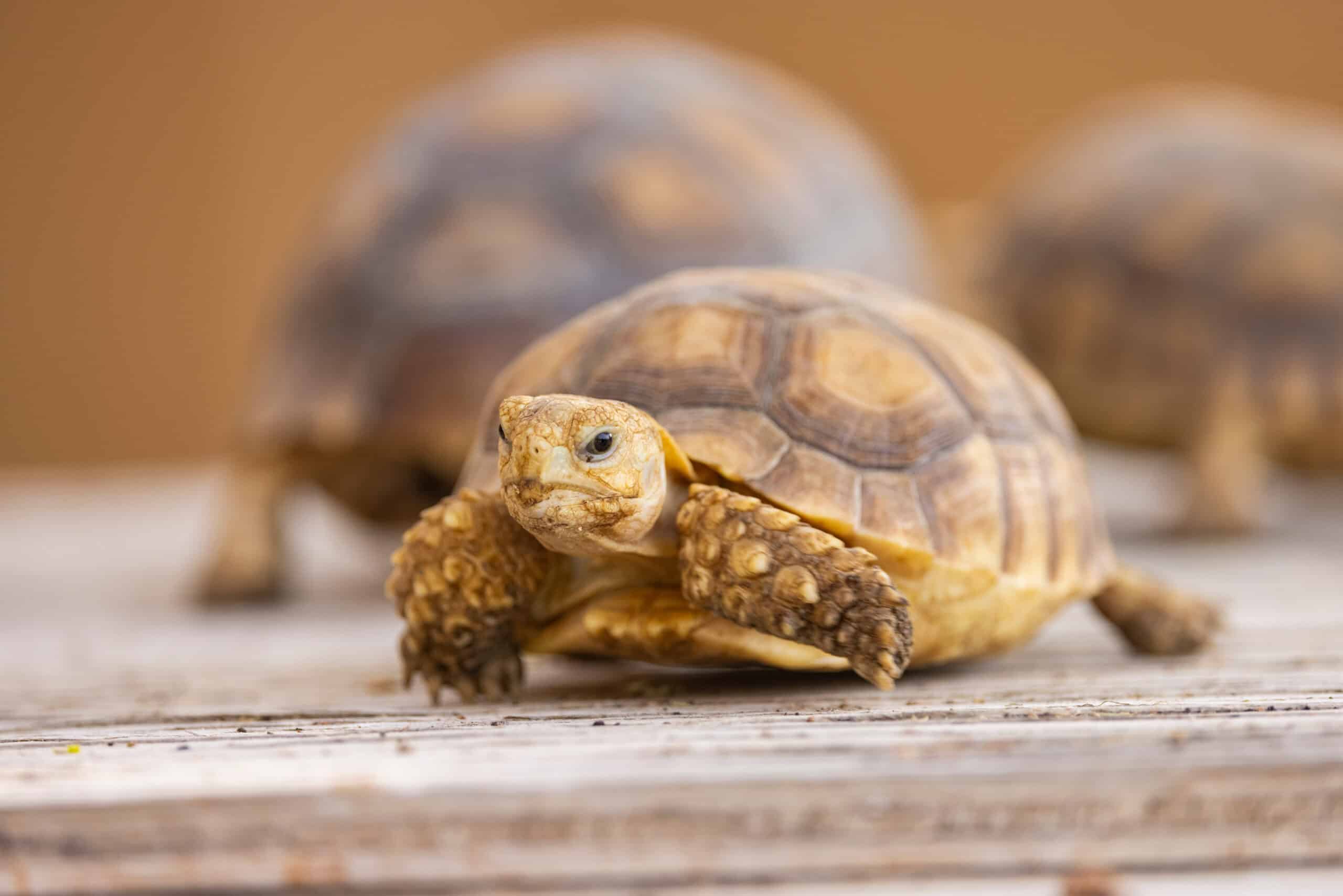
The Egyptian Tortoise is one of the smallest tortoise species in the world. Native to the deserts of Egypt and Libya, it is critically endangered due to habitat loss and illegal pet trade. Fewer than 1,000 individuals remain in the wild. Conservationists are working to protect their habitats and regulate the pet trade. Breeding programs are also helping to boost their population.
This article originally appeared on Rarest.org.
More from Rarest.org
1979 Kennedy Half Dollar Value Guide
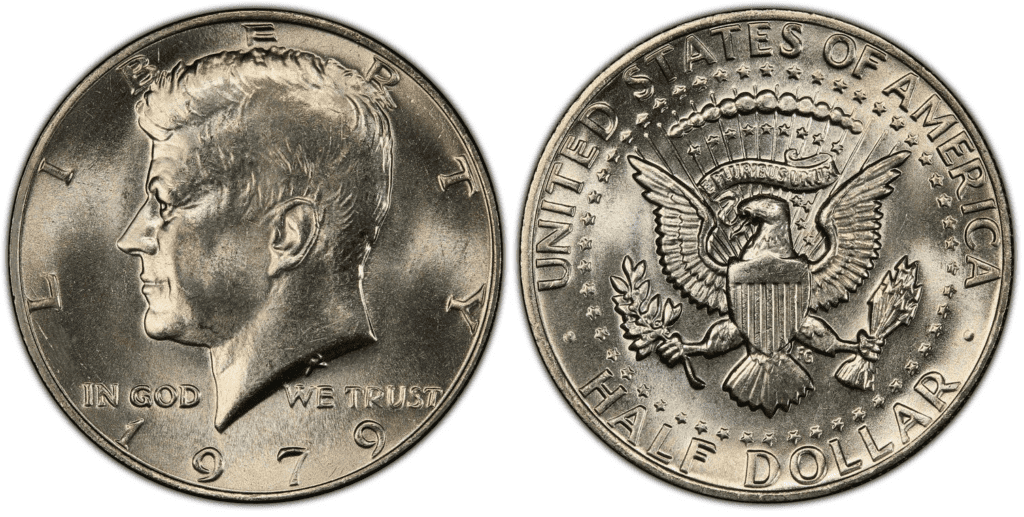
The 1979 Kennedy half a dollar is worth 50 cents. It is made of 75% copper and 25% nickel. However, Kennedy’s half-dollar coins were made of 40% silver and 60 percent copper when it was made from 1965 to 1970. Read More.
1979 Dime Value Guide
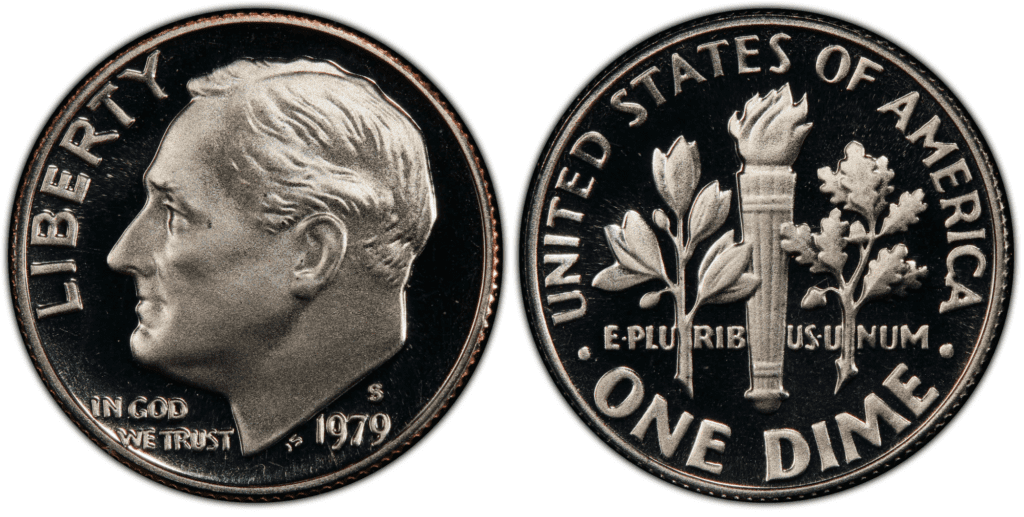
The 1979 Roosevelt dime is made of 91.67% copper and 8.33% nickel. It has a face value of $0.10, a mass of 2.268 grams, a diameter of 17.91 mm, and a thickness of 1.35 mm. Read More.
15 Endangered Species Residing in Hidden Corners of the Earth

In the far reaches of our planet, there are species so rare and elusive that they seem almost mythical. Read More.
